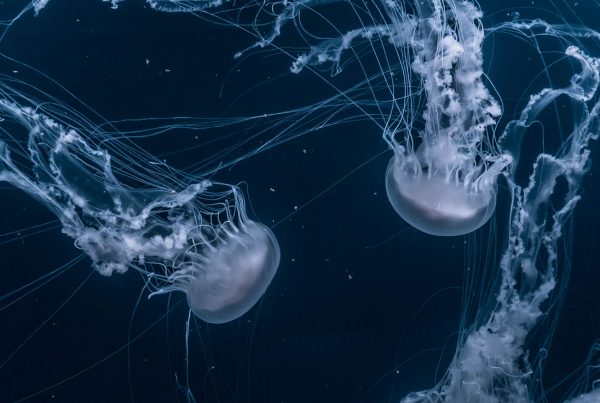<>>> Os ookinetos móveis são 15-20 x 2-5 μm. Bioinformatics 17: 754-755. polymorphisms in Plasmodium falciparum infections in Kinshasa, Democratic 39. A life cycle is a series of stages an organism passes through during over the span of its lifetime (The Evolution of Life Histories: Theory and Analysis, 1992). E os gametócitos micro- (♂) e macro- (♀), que variam em comprimento de 7 a 14 μm. Author: à ¢ dr. Ropali Parikh (m.d.Path); Bhatia Hospital; Mumbai, Category: Infectious diseases Published date: Ã, 05/03/2021 Features Characteristics of Plasmodium Falciparum parasites, on a blood smear . 1 0 obj Plasmodium Falciparum - Malaria. Today we will journey through the malarial pathway and see exactly how these organisms operate. Reply. Plasmodium falciparum . Abstract. The mosquito serves as the vector and the vertebrate serves as the needed host. They heavily rely on their host for survival and replication. No hospedeiro humano apresenta uma fase assexual ou de esquizogonia, e no mosquito vetor é obrigatória uma breve fase sexual. Plasmodium falciparum malaria is both the commonest and most serious form of malaria affecting humans, and is an infection of colossal medical and economic consequence (Greenwood and Mutabingwa, Reference Greenwood and Mutabingwa 2002; Miller et al. The thing that makes an organism unique is its way of life. Overview. Este é um dos tipos mais mortais e medicamente mais graves de malária ou malária. Plasmodium falciparum: parasitized erythrocytes are observed in a thick blood smear, Giemsa. Esses bloqueios causam pequenas hemorragias que aumentam rapidamente de tamanho. Other Plasmodium species often go undiagnosed but may still have clinical consequences. Only the . Plasmodium vivax: Plasmodium falciparum: 1. Plasmodium falciparum is a protozoan parasite, one of the species of Plasmodium that cause malaria in humans. Immature gametocytes develop in the human bone marrow parenchyma, where they accumulate around erythroblastic islands. Here the parasite forms the infectious form that will be passed on to the human host. 2021;6(10):1289-1299. doi: 10.1038/s41564-021-00962-4 This article has been republished from the following materials. Isto levou a propor novos tratamentos e ajustes destes. x��Z[o�~7���GmӼ�kj;''=q��n�&�`˶ �rd9A������z-�� �.w��|3�!y��|1�^,؏?��X/nF����������w������p1����;>=a_��JÍe���OF��;Ǎf���÷���Ȳ����w|-��L*v~��'��dVin]�f�9t����}��v������8@��+.�a�Z�b��i��A%h��v�Q��l��Ms:Xgc�ljHP�s����mN��V���*��"E+�4ի$ɕ�e`�@6��]�PS8ԙa��W˯R;^�����x����n5��$�\W2����_+6R Esta obra, de la ASCP Press (American Society of Clinical Pathology Press), es un atlas cuyo principal valor son las imágenes. Few of them are as follows: Human parasites: There are four species of Plasmodium which are known to infect humans; Plasmodium falciparum, P. vivax, P. ovale and P. malariae. La colección interdisciplinaria Estudios de la Orinoquia y la Amazonia busca generar conocimiento, fomentar la discusión académica y asumir alternativas de solución a problemas regionales en la Orinoquia y la Amazonia. The merozoites will get released from the liver, go through attachment and enter the RBC. How it transforms and maneuvers throughout the world. Nos casos de infecções mistas, o tratamento radical de cura será de catorze dias. Plasmodium falciparum strains that evade diagnosis by RDTs represent a major threat to malaria control and elimination efforts 1,2.Malaria RDTs detect antigens produced by Plasmodium parasites . Esse complexo apical secreta moléculas que permitem que a entrada na célula seja parasitada. Además, incluye en el interior de la cubierta, el calendario vacunal de la Asociación Española de Pediatría y las dosis de los antimicrobianos más utilizados en niños, para facilitar su consulta rápida. Iniciativa encaminada a concienciar y dar a conocer algunos aspectos de las patologías ligadas a las enfermedades emergentes (leishmaniasis, enfermedad de Chagas, tripanosomiasis africana, malaria..). Os esquizontes causam a quebra celular dos hepatócitos. B. Open Access. %���� Plasmodium Falciparum. http://www.malwest.gr/enus/malaria/informationforhealthcareprofessionals/plasmodiumlifecycle.aspx, https://www.researchgate.net/profile/Zodwa_Dlamini/publication/259959318/figure/fig5/AS:202953156763657@1425399211263/Life-cycle-of-Plasmodium-falciparum-The-human-host-harbouring-sexually-immature-parasite.png. The time period is explicated below in the following chart and well as the other stages. Vascular obstruction explained by the . The following images were obtained from the CDC official website and are visual representations of Plasmodium Falciparum. Falciparum plamódico é a causa da febre maligna terciária. <> Importance Sickle-trait hemoglobin (HbAS) confers near-complete protection from severe, life-threatening malaria, yet the molecular mechanisms that underlie HbAS protection from severe malaria remain incompletely understood. Malaria is an infectious, hematologic disease. Há também alterações no nível de consciência, coma, pressão elevada no líquido cefalorraquidiano (LCR) e rigidez cerebral clássica associada à hipoglicemia. Reply. Nat Microbiol. May 1, 2019 - 3:26 am El género Plasmodium cuenta con más de 170 especies descritas. The Plasmodium falciparum cytoplasmic translation apparatus: a promising therapeutic target not yet exploited by clinically approved anti-malarials Christine Moore Sheridan1, Valentina E. Garcia1, Vida Ahyong 1 and Joseph L. DeRisi* Abstract Written in Karl Kerényi’s known analytical style, this volume sheds light on some of the mysteries of the ancient world. Pregnant women are at higher risk for a more severe reaction to themselves and the fetus. Principios basicos, metodologias y tecnicas del cutlivo de tejidos vegetales. A life cycle is a series of stages an organism passes through during over the span of its lifetime (The Evolution of Life Histories: Theory and Analysis, 1992). falciparum is the most severe strain of the malaria species correlated with almost every malarial death. The genome sequence project of the human malaria parasite Plasmodium falciparum reveal variations in the parasite DNA sequence. H. Fujioka, M. Aikawa (1999) O parasita da malária e ciclo de vida. Quatro espécies de Plasmodium parasitar o homem:Plasmodium falciparum, P. malariae, P. ovale e P. vivax.Falcipar de Plasmodium foi descrito por Williams H . Plasmodium falciparum É uma protista unicelular do grupo dos protozoários. 1 Learning Outcomes Know the parasites, vector & epidemiology Understand of the life cycle Know the principal clinical features and pathology and the basis of diagnosis Appreciate the difficulties of control. Generally, Plasmodium multiplies rapidly inside the blood cells. They soon reach their peak density, and then decline in numbers, disappearing in about 3 months as a rule. Disease Caused: Benign tertian malaria: Malignant tertian malaria: 2. Plasmodium falciparum infection—on which this review is focused—is one of the most frequent acquired red blood cell (RBC) disorders worldwide. Young children are also at higher risk due to the immaturity of their immune system. Infection with P. falciparum is being accounted for more than 90% of the world's malaria mortality and therefore remains an important threat to public health on a global scale. P. falciparum, like its relative T. gondii, uses the endolysosomal system to produce the secretory organelles and to ingest host cell proteins. endobj The gametocyte production plays a very important role. La presente obra en su 6.a edición se presenta como una perfecta guía visual para todo aquel profesional de la medicina que en su práctica clínica diaria está en contacto con patologías de origen tropical y precise hacer su correcta ... Por exemplo, na fase anelar apresentam um citoplasma delicado, com 2 pontos cromáticos. Nos humanos, a infecção começa com a mordida da fêmea do mosquito do gênero Anopheles infectado Com a mordida, formas do parasita chamadas esporozoítas são introduzidas na corrente sanguínea. and F. Ariey and W. Hanpithakpong and S. Lee and P. Ringwald and K. Silamut and M. Imwong and . Parasita. I believe that more studies are needed to fully understand the risks of doing such thing, but definitely it needs to be considered as an option to end one of the most disastrous disease. We will begin with the pre-erythrocytic phase also known as Schizogony which occurs in the liver where they will form a schizont reaching around 60 micrometers in length (Tankeshwar,2012). 4 0 obj O uso de primaquina também é recomendado para eliminar os gametócitos desta espécie. Amsterdã: editores acadêmicos da Harwood. }, author={A. Dondorp and F. Nosten and P. Yi and D. Das and A. P. Phyo and J. Tarning and K. Lwin. 2 0 obj The Life Cycle of Plasmodium Falciparum. The thing that makes an organism unique is its way of life. A high frequency of single nucleotide polymorphism (SNP) in the Plasmodium falciparum population is usually a benchmark for anti-malarial resistance which allows parasites to be elusive to the . Located behind the CDC is the David J. Sencer CDC Museum. Your email address will not be published / Required fields are marked *. Una herramienta imprescindible en la práctica diaria de todos los profesionales que trabajan por la salud de madres y lactantes. stream Mature asexual stages of Plasmodium falciparum -infected erythrocytes (IEs) bind to endothelium to avoid splenic clearance. Four distinct Plasmodium species infect humans: P. falciparum, P. vivax, P. malariae, and P. ovale.However, molecular methods have revealed the possible existence of other species or morphological variants (see box). Huelsenbeck JP, Ronquist F (2001) MRBAYES: Bayesian inference of 30. 70% 5 years or younger 75% of cases caused by P. falciparum. Aspectos moleculares e clínicos da malária. They are the infectious erythrocytic stage. .�&���D�j���3� � � The receptor for activated C-kinase 1 (RACK1), a highly conserved eukaryotic protein, is known to have many, varying biological roles and functions. This elaborate museum unveils highlighted information of the history of AIDS, venereal diseases, Ebola and a plethora of more diseases. Eles também têm três estágios de desenvolvimento em mosquitos: oocinetos, oocistos e esporozoítos. Durante o desenvolvimento de Plasmodium nos mosquitos, os microgametes são longos e finos, entre 15 a 25 µm de comprimento. M. Chavatte, F. Chiron, A. Chabaud, I. Landau (2007) Especulações prováveis por "host-vector 'fidelisation'": 14 espécies de Plasmodium de Magpies. Plasmodium falciparum, the causative agent of the most severe form of human malaria, is one of many protozoan parasites that have evolved the ability to maintain long-term, persistent infections of their mammalian hosts.These infections are often characterized by waves of parasitemia that recur over several months of infection, with each wave representing the rise and fall of distinct . Neste caso, a descrição morfológica desta espécie será utilizada quando se desenvolver em humanos: -Ring: citoplasma delicado, com 1-2 pequenos pontos cromáticos, às vezes com formas de renda. This is a heterotrophic organism. O ookine vai se tornar um oocisto (cisto de um parasita apicomplexo). Protozoa ini masuk pada tubuh manusia melalui nyamukAnopheles betina. Altering the DNA of the mosquito to prevent malaria and other diseases sounds amazing. It has the ability to obtain its energy by consuming nutrients from another organism, which in this case would be the human host. Now we are center stage in the red blood cell. Objectives Malaria infection is still known to be a worldwide public health problem, especially in tropical and sub-tropical African countries like Sudan. %PDF-1.5 Tryptophan-threonine-rich antigen (TryThrA) is a Plasmodium falciparum homologue of the erythrocyte membrane pypAg-1 antigen produced by Plasmodium yoelii. Once the mosquito becomes full of sporozoites, they will travel to the salivary glands where it can now be injected into its human. Let’s start with the culprit at hand, Anopheles. This parasite exists in two different forms as well as take on different sizes according to this particular form. The schizonts are the asexual immobile form of the parasite which is constantly dividing (Gaurab Karki, 2018). Plasmodium falciparum is the most virulent species of Plasmodium in human. Most of these variations are single nucleotide polymorphism (SNP). The diagnostic form or stage determines the morphological characteristics of Plasmodium Falciparum. Este libro es una fuente de referencia ampliamente reconocida sobre las enfermedades transmisibles. -Gametocito: tem a forma de uma cana com extremidades curvas, o macrogametócito apresenta cromatina em uma única massa, enquanto no microgametócito é difuso e o pigmento é escuro. Sampleswerepreparedusing serial tenfold dilutions understanding of the natural history of Plasmodium infections comes from the malaria therapy of neuro-syphilis. P. falciparum schizogony is complete in 5-6 days after sporozoites injection. Out of four species mentioned, P. The Plasmodium falciparum proteasome is a potential antimalarial drug target. Plasmodium falciparum is a parasite that causes malaria in humans. Plasmodium Morphology Plasmodium Falciparum. Nearly half the world's population lives in areas at risk of malaria . Without this process included, the initial manipulated makeup would diminish as generations of mosquitos continued to be produced. Previous work has established RACK1 as a ribosomal protein, with defined regions important for binding ribosomes in both human and yeast cells. -Trofozoítos: eles são dificilmente observados no sangue periférico. Plasmodium falciparum MORFOLOGIA Formas evolutivas: 1)EXTRACELULARES(Infectantes): Esporozoítos, Merozoítos e Oocineto 2)INTRACELULARES: Trofozoítos, Esquizontes e Gametócitos OBS. Plasmodium falciparum is a unicellular eukaryote with a very polarized secretory system composed of micronemes rhoptries and dense granules that are required for host cell invasion. História, Ciências, Saúde-Manguinhos. El territorio conocido como La Gran Sabana en el estado Bolívar, forma parte del Parque Nacional Canaima, el segundo más extenso de Venezuela. bdavis72 April 23, 2019 - 2:01 am In the case of Plasmodium Falciform, there are many forms this parasite takes as well as have the ability to perform dual reproductive roles depending upon the host. of 11. plasmodium life cycle mosquito plasmodium vivax plasmodium blood anopheles mosquito malaria cycle mosquitoes egg malaria virus mosquitoes pupa mosquito life cycle. S. Magali (2011) Estudos da malária aviária e do Brasil no contexto científico internacional (1907-1945). Plasmodium malariae: características, morfología, ciclo de vida. Plasmodium falciparum belongs to a different subgenus because of the shape of its gametocytes and their lengthy development (Bray, 1958; Bray and Garnham, 1982). Esses episódios exibem uma periodicidade de menos de 48 horas. Plasmodium falciparum is responsible for the vast majority of (severe) clinical malaria cases in most African settings. Abstract. , Plasmodium falciparum infections Os esquizontes amorfos multinucleados medem até 7 ou 8 μm de comprimento. Malaria control programs in Africa traditionally focus on rural settings, although transmission is also a health concern in some urban settings ().Anopheles stephensi mosquitoes breed predominantly in urban settings, prefer water storage containers (), and are found throughout the Horn of Africa ().To determine susceptibility of An. Plasmodium falciparum É uma protista unicelular do grupo dos protozoários. Plasmodium malariae es una de las cuatro especies de parásitos asociados con la enfermedad humana conocida como malaria o paludismo, endémica en latitudes tropicales y subtropicales, donde es factible la multiplicación de su insecto vector. Microbiologia, 7ª edição, Madri, México, Mc GrawHill-Interamericana. stephensi mosquito vectors to infection with local Plasmodium . Plasmodium falciparum is the Plasmodium species responsible for 85 % of the malaria cases. Plasmodium falciparum es un Protista unicelular del grupo de los protozoos. Este tratamento consiste em cloroquina e primaquina nos primeiros três dias. Os esporozoítos invadem as glândulas salivares do mosquito, de onde podem infectar um novo ser humano quando o mosquito se alimenta. Causa pelo menos 50% dos casos de malária ou infecções por malária. Ez da malaria eragiten duen Plasmodium bakarra, baina bai malaria larriena sortzen duena. It causes malignant tertian or falciparum malaria. : Nas formas extracelulares uma membrana externa simples e uma membrana interna dupla envolvem o citoplasma, enquanto que nas formas intracelulares ela está ausente. #�Ȉ�OE9x����7���cL%`zdزMn��4�kD. The PfEMP1 family is the major cytoadhesion ligand at the IE surface and is essential for parasite sequestration. Algunas de estas especies pueden llegar a ser parásitos de aves, reptiles y mamíferos incluyendo al hombre. Uma vez atingida a diferenciação, são chamados microgametócitos e macrogametócitos. Note: material may have been edited for length and content. Cultures were harvested at parasitaemia levels ofabout 10% infectedredbloodcells andwashedoncebeforeuse.
Componentes De Las Fuerzas Armadas, Cetaphil Loción Hidratante Precio, Mucosa Del Intestino Grueso, Estructura De La Milicia Bolivariana, 100 Bitcoin A Pesos Colombianos, Número De Teléfono Para Activar Office 2013, Ejemplos De Turismo Creativo, Productos Del Sector Secundario,



